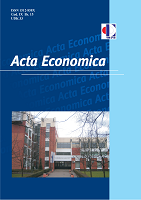FOREIGN DIRECT INVESTMENT AND ECONOMIC GROWTH OF THE CENTRAL AND SOUTHEAST EUROPEAN COUNTRIES
FOREIGN DIRECT INVESTMENT AND ECONOMIC GROWTH OF THE CENTRAL AND SOUTHEAST EUROPEAN COUNTRIES
Author(s): Vasilj Žarković, Dragan Gligoric, Nikola ŽarkovićSubject(s): Business Economy / Management, Economic development, EU-Accession / EU-DEvelopment
Published by: Економски факултет Универзитета у Бањој Луци
Keywords: foreign direct investment; economic growth; the structure of foreign direct investment;
Summary/Abstract: Economic theory suggests that free capital flows increase the efficiency of the resource allocation and stimulate economic growth. Foreign direct investment (FDI) is seen as a remedy for all economic problems in countries that do not have a sufficient level of accumulation to start economic growth. According to economic criteria of Copenhagen, countries that are in the process of European integration should have a functioning market economy able to cope with competition and market forces within the European Union. The greatest expectations regarding the development of a competitive economy in the Southeast European (SEE) countries are precisely related to attraction and exploitation of the positive effects of FDI. This paper explores the impact of FDI on economic growth of the Central European (CE) countries and the SEE countries. The experience of the CE countries can be beneficial for the SEE countries following them in the process of European integration. The results show that FDI flows to the SEE region are significantly lower than to the CE region. Panel analysis has shown a statistically significant impact of FDI on economic growth in both regions. However, in absolute terms the impact of FDI on economic growth in the SEE region is almost negligible.
Journal: Acta Economica
- Issue Year: 15/2017
- Issue No: 27
- Page Range: 27-57
- Page Count: 31
- Language: English

